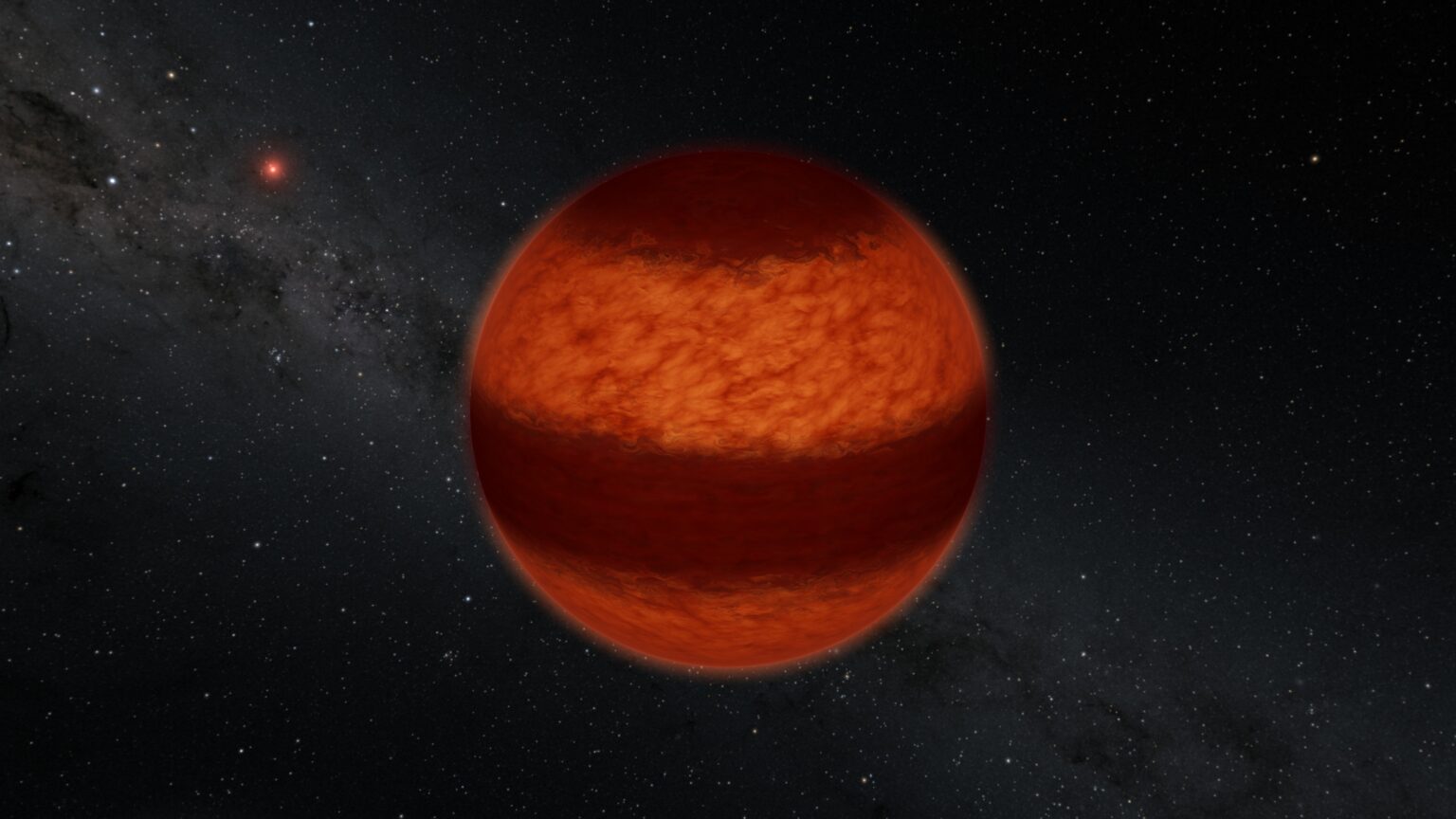The brown dwarf SIMP J013656.5+093347 is a small sub-stellar object that is located 20 light-years away from us. Recent studies show that there may be clouds in its atmosphere.

Brown dwarf SIMP0136
On February 22, an article by scientists from Boston University appeared on the arXiv preprint server. They conducted a study of the brown dwarf SIMP J01365 close to Earth in several microwave radiation ranges. And it allowed them to look inside the atmosphere of this celestial body.
SIMP J013656.5+093347 (or SIMP0136 for short) is a brown dwarf of spectral type T. It is located at a distance of 20 light-years from the Sun. It was first discovered in 2006. This object has a radius 15 percent larger than Jupiter, but at the same time exceeds it in mass by 12.7 times.
The surface temperature of the SIMP0136 is 1100 degrees. Previous studies have shown that it makes one revolution around its own axis in 2.4 hours. In addition, one study found pulsed radio emission with high circular polarization in the range of 4-8 GHz and a magnetic field of more than 2.5 kG, indicating the presence of auroras at this object.
Clouds in the atmosphere
The new study was conducted in the so-called J- and Ks-bands. These are high-frequency waves, the frequency of which is measured in tens of GHz. The scientists discovered the presence of a phase shift in the radiation curve and this allowed them to assume that there was something in the atmosphere of SIMP0136.
According to the researchers, this is “something” — at least two layers of clouds hanging in the atmosphere of a brown dwarf. One of them is well tracked in the Ks band, and the second is visible at both wavelengths. And it should be said that this conclusion is not unexpected. Last year, another group of scientists came to similar conclusions about the atmosphere of SIMP0136.
Interestingly, in this study, it is assumed that the lower cloud consists of iron, and the upper one consists of forsterite, which is one of the varieties of magnesium silicate. However, the conditions on the brown dwarf really contribute to the fact that these substances are in the form of small droplets of liquid.
According to phys.org
Follow us on Twitter to get the most interesting space news in time
https://twitter.comne/ust_magazine


